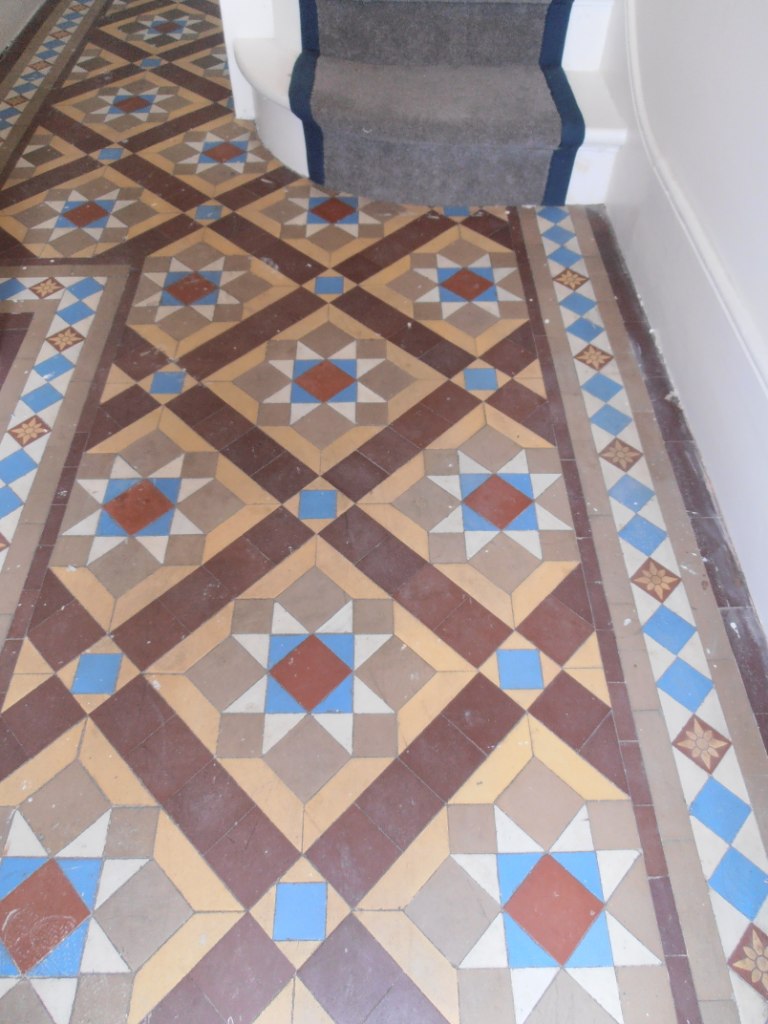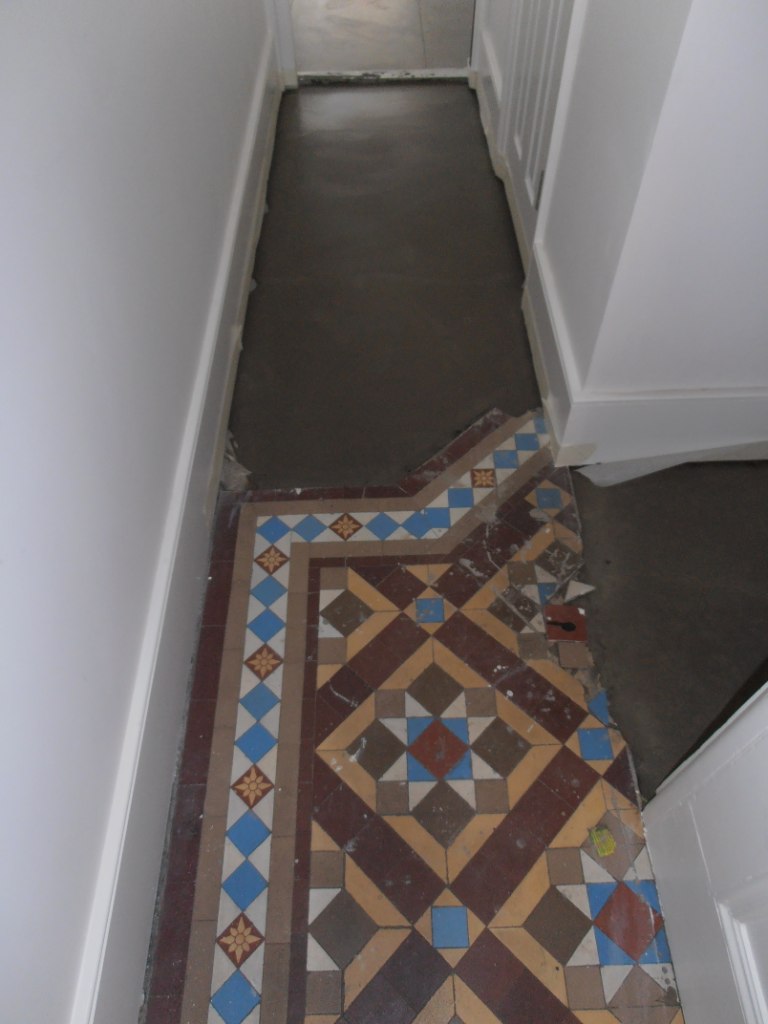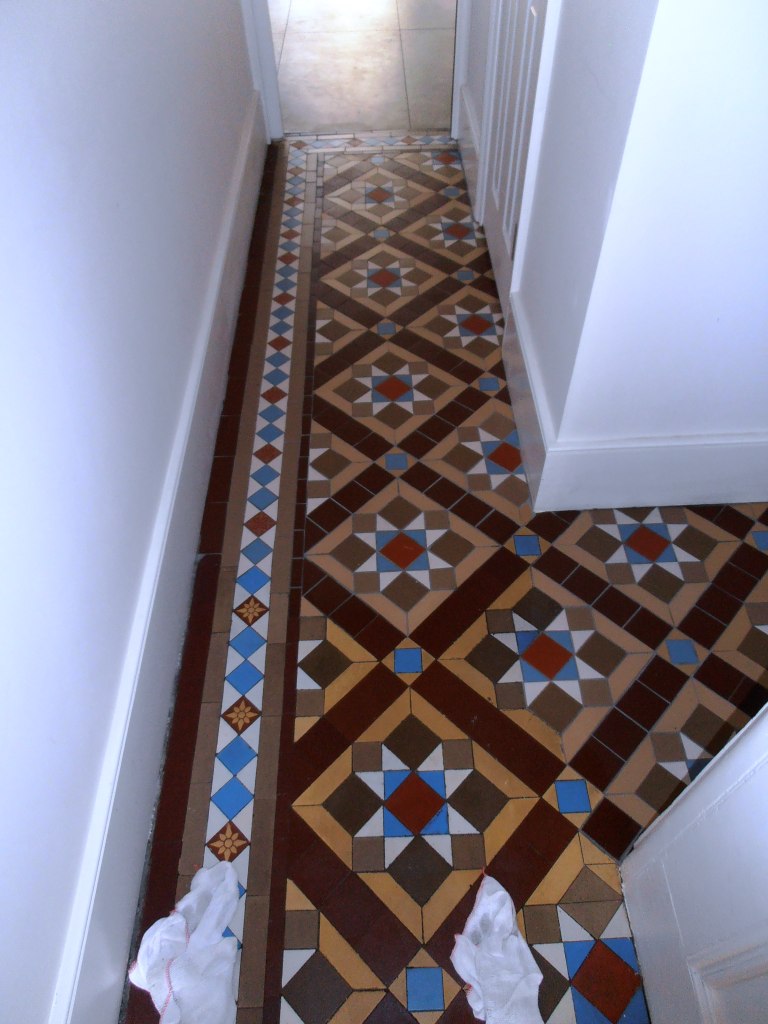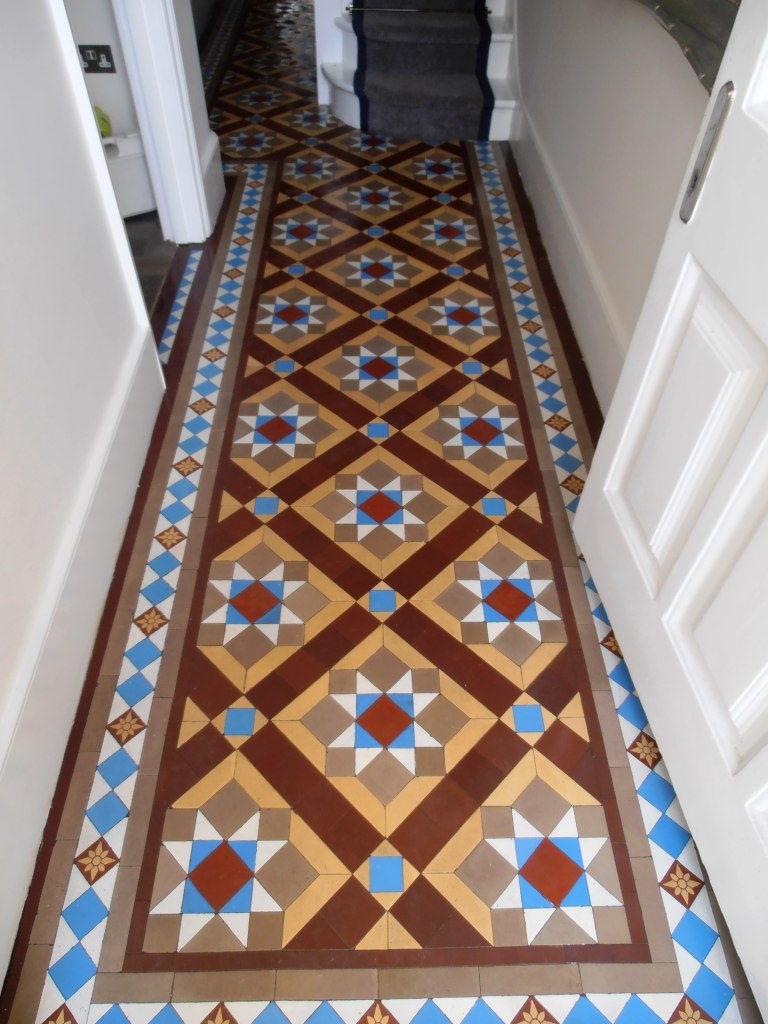Wax Sealed Saltillo Terracotta Hallway Floor Renovation in Canterbury
Earlier this year I went to visit a property in Canterbury to look at restoring a Terracotta tiled floor. The floor was approximately 11m2 and made from the larger Saltillo type Terracotta tiles. It had been in situ for some time and being located in the hallway it was subject to the heavy foot traffic of a busy household.
Having taken a closer look at the Terracotta tiles I could see there were many high spots due to poor installation by the original tiler, on top of that it had then been sealed with linseed oil followed by a wax paste. Wax was traditionally used to seal Terracotta floors, but it scratches easily and can lead to a thick build-up. Since the introduction of modern sealers designed for the job, we don’t recommend wax treatments anymore.
 |
 |
We discussed the process to renovate the floor, explaining that the best course of action would be to use milling pads to level the surface of the tiles which would improve the finish and remove the built-up wax. Once prepared in this way the floor would be sealed to protect it going forward. They were happy with my quotation and we agreed a date to return and complete the work.
Renovating a Terracotta Tiled Hallway Floor
The use of Milling pads can generate a lot of slurry to our first task was to protect the surrounding areas using protective sheeting. The area was quite tight to work in, so we used the smaller six-inch milling pads which are encrusted with coarse industrial diamonds. The pads we fitted to a handheld buffer and worked over the tiles gradually increasing the pads from coarse to finer grits. The machine we use has a water feed that keeps the surface lubricated and this also helps to reduce the dust. The fine slurry generated using this process is rinsed off and extracted with a wet vacuum.
The next step was to remove the old wax the floor had been treated with a dilution of Tile Doctor Wax Away which is designed for exactly this purpose. Its applied to the floor and then scrubbed in using a slow speed rotary machine. Afterwards the floor is rinsed with water several times and the waste removed with the wet vacuum. By the time we had finished that day we could see a big improvement in the floor surface. After the final rinse the floor was left to dry off overnight.
Sealing a Terracotta Tiled Hallway Floor
I came back the following day and using the moisture meter checked that the floor was dry. It was well within the accepted parameters, so I was ready to apply the seal.
To seal the Terracotta, I had selected to use Tile Doctor Colour Grow, this is a modern durable sealer that provides long lasting protection and ideal for busy hallways. Colour grow also also enhances the natural red and orange colours in the Terracotta leaving a nice subtle finish. Three coats of Tile Doctor Colour Grow were applied.
 |
 |
The photographs I took don’t show the difference in the floor that well, however my customer was very happy with the improvement in the floor and glad that the potential trip hazard has been resolved.
Professional Restoration of a Terracotta Tiled Hallway in East Kent
Wax Sealed Saltillo Terracotta Hallway Floor Renovation in Canterbury Read More »


































